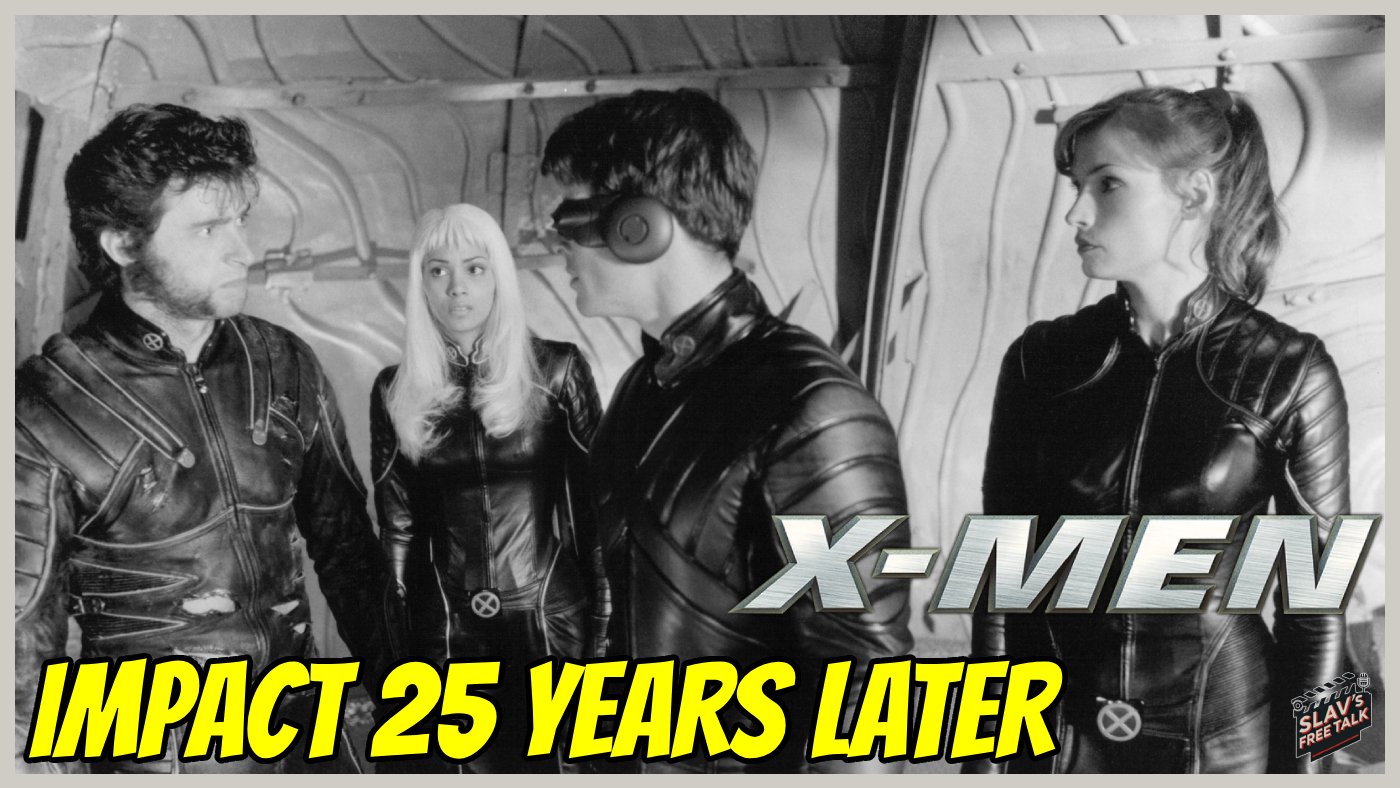25 Years Later, X-Men Still Packs an Adamantium Punch
Did a pack of leather-clad mutants really jump-start the billion-dollar cape gold rush? Short answer: yup. Longer answer: buckle up, bub, because we’re slicing into cinema history sharper than Wolverine’s manicure.
It’s been twenty-five years since Wolverine strutted onto the big screen in a black-leather jumpsuit and snarled, “What do they call you Wheels?” With that one quip and a set of adamantium claws, X-Men sliced clean through the notion that superheroes belonged in toy aisles and straight-to-video bins.
Before July 14, 2000, the cinematic cape game was wobbling on neon Bat-nipples, George Clooney credit card jokes, and a public that basically treated comic-book movies like the parenting aisle at Walmart… tolerated but rarely loved. Sure, Wesley Snipes had flash fried vampires in Blade, but that R-rated gem was considered an aberration, not a blueprint. Studios still treated spandex as financial asbestos:
too risky to touch without hazmat gloves.
Then came Fox’s $75 million wager on a ragtag band of mutants.
The budget looked modest even then, but the return roughly $296 million worldwide felt like winning the lottery twice in one day.
Critics, most of whom had been burned by Batman & Robin’s ice puns, suddenly found themselves praising a comic book adaptation for tackling prejudice, genocide, and teenage angst with straight faced sincerity.
Audiences followed suit, packing theaters to see Magneto weaponize the Statue of Liberty while Professor X delivered Shakespearean gravitas from a wheelchair.
So why did X-Men succeed where its garishly colored predecessors belly-flopped?
First, the story leaned into real world allegory mutant persecution mirrored racism and homophobia without preaching.
Second, it was an ensemble piece. Instead of hitching the entire film to one ham fisted hero, you got Wolverine’s berserker rage, Rogue’s tragic isolation, and Magneto’s chilling Holocaust backstory, all swirling around a conflict that felt eerily possible.
Third, the visual effects hit a sweet spot. Believable enough to wow, restrained enough to keep the weirdness grounded. And let’s be honest, ditching yellow spandex for sleek leather didn’t hurt… At the time.
Cyclops even joked the wardrobe upgrade with that cheeky “What would you prefer, yellow spandex?” jab.
The dominoes toppled fast. Sony and Sam Raimi’s Spider-Man was on it’s way, Warner Bros. crawled out of its Schumacher hangover to court Christopher Nolan, and an ambitious Marvel exec named Kevin Feige began scribbling a cinematic master plan most fans would soon tattoo on their souls.
By the time Tony Stark admitted, “I am Iron Man,” the box office floodgates were permanently jammed open. Annual global superhero revenue sailed past a billion dollars and never looked back.
Streaming would later join the party with titles such as Invincible, The Boys, and Peacemaker, shows that still echo X-Men’s twin themes of outsider identity and punch-first sarcasm.
Could that original film work today? Swap the leather for tactical fabric, inject TikTok-friendly meme beats, and deepen Magneto’s trauma… and yes, Gen Z would probably ugly cry in IMAX all over again.
The core formula remains solid. Heavy themes dressed in popcorn thrills, characters who bleed (sometimes literally), and just enough self aware humor to stop the earnestness from curdling.
Two and a half decades on, X-Men still feels like the evolutionary leap that pushed superhero cinema up the food chain.
It taught Hollywood that tights can tell grown up stories, that a PG-13 rating can still pack existential dread, and that audiences will absolutely pay to watch a metal clawed Canadian shred social injustice one deranged mutant at a time.
Without that leap, the MCU might still be a doodle on Feige’s Starbucks napkin, and we’d be stuck rewatching neon lit Bat ice skating routines.
So here’s to X-Men! The film that proved a little mutation is sometimes exactly what the gene pool needs.


